#Microsoft Azure OpenAI Service
Explore tagged Tumblr posts
Text
Audi Adds ChatGPT for Smarter In-Car Experience

Audi will integrate ChatGPT into its infotainment systems starting in July. This integration will leverage Microsoft Azure OpenAI Service. It will cover two million Audi models with the MIB 3 system since 2021. Drivers can interact with their cars using natural language. They will benefit from voice control over infotainment, navigation, and climate systems. Additionally, they can access general knowledge through this feature.
Marcus Keith, Audi’s Vice President of Interior, Infotainment, and Connectivity Development, emphasized the benefits. He highlighted the seamless merging of ChatGPT’s capabilities with Audi’s voice control. This promises customers an enhanced in-cabin experience with secure AI-based knowledge access.
Read More:(https://theleadersglobe.com/science-technology/audi-adds-chatgpt-for-smarter-in-car-experience/)
#integrate ChatGPT#Audi#Microsoft Azure OpenAI Service#global leader magazine#the leaders globe magazine#leadership magazine#world's leader magazine#article#best publication in the world#news#magazine#business
1 note
·
View note
Text
Boosting KPIT's Vehicle Diagnostics Platform Trace2Fix with Microsoft Azure and OpenAI Services
Introduction:
In the fast-evolving landscape of automotive technology, KPIT continues to make strides with its cutting-edge Vehicle Diagnostics Platform, Trace2Fix. The latest development in this journey involves a significant boost through integration with Microsoft Azure and OpenAI services, positioning Trace2Fix at the forefront of innovation.
Key Highlights:
Seamless Integration with Microsoft Azure:
KPIT's decision to integrate Trace2Fix with Microsoft Azure brings forth a myriad of advantages. The scalability and reliability of Azure's cloud infrastructure ensure that the vehicle diagnostics platform can handle large datasets and deliver real-time insights. This integration enhances the overall performance and responsiveness of Trace2Fix, providing users with a smoother and more efficient experience.
AI-Powered Enhancements with OpenAI:
The collaboration with OpenAI adds a layer of artificial intelligence to Trace2Fix, further elevating its capabilities. Through OpenAI services, Trace2Fix gains access to advanced machine learning algorithms and natural language processing, empowering the platform to analyze complex diagnostic data with unparalleled accuracy. This infusion of AI not only streamlines the troubleshooting process but also opens doors to predictive maintenance, ultimately reducing downtime for vehicle fleets.
Benefits for Users:
Faster Diagnostics:
The combined power of Microsoft Azure and OpenAI enables Trace2Fix to expedite the diagnostics process. Vehicle issues can be identified and addressed swiftly, minimizing downtime and optimizing operational efficiency.
Enhanced Data Security:
Microsoft Azure's robust security features provide a secure environment for Trace2Fix's diagnostic data. This ensures that sensitive information remains protected, meeting the stringent data security standards of the automotive industry.
Predictive Maintenance Insights:
With OpenAI's machine learning capabilities, Trace2Fix can now predict potential maintenance issues based on historical data. This proactive approach allows fleet managers to schedule maintenance activities in advance, preventing unexpected breakdowns and reducing overall maintenance costs.
Conclusion:
KPIT's commitment to innovation is evident in the strategic integration of Trace2Fix with Microsoft Azure and OpenAI services. This synergy not only catapults the platform to new heights but also underscores KPIT's dedication to providing state-of-the-art solutions in the realm of vehicle diagnostics. As the automotive industry continues to evolve, Trace2Fix stands as a testament to the power of collaboration and technological advancement.
#vehicle diagnostics platform#Trace2Fix gets a Microsoft Azure OpenAI Service boost#Microsoft Azure OpenAI Service#vehicle diagnostics platform Trace2Fix#kpit#kpit careers
0 notes
Text
Azure AD (Active Directory) Now Microsoft Entra ID: Pricing, Features, Updates

Stay ahead with Microsoft's latest cloud innovation! Azure AD is now Microsoft Entra ID, continuing the tradition of renaming to enhance clarity and functionality.
What You'll Find:
What is Microsoft Entra ID?: A cloud-based identity and access management service.
Key Features: Access Management, Identity Protection, Governance, Privileged Managed Identities, and B2B/B2C Services.
Pricing Plans: Explore the free, P1, and P2 plans and their benefits.
Why It Matters: Microsoft Entra ID ensures secure and efficient access to IT resources, whether internal or external. With enhanced features and flexible pricing, it's designed to meet diverse business needs.
Read More! Dive into our blog for a detailed guide on Microsoft Entra ID. Stay informed and make the most of Microsoft's cloud services.
Contact ECF Data for Expert Guidance Need help navigating Microsoft Entra ID? Contact ECF Data for a free Q&A session and expert licensing advice. Click below to connect with our senior negotiation experts.
Read the Full Blog: Azure AD (Active Directory) Now Microsoft Entra ID: Pricing, Features, Updates
Contact ECF Data
Unlock the potential of Microsoft Entra ID today!
#azure services#azure ai#Azure AI Services#azure openai#azure openai service#azure open ai#azure ai studio#microsoft azure ai#azure openai pricing#azure ai services#azure ai ml services
1 note
·
View note
Text
Microsoft and Epic Join for Healthcare AI

Today, technology holds the possibility of helping us overcome some of the largest problems we face, and nowhere is generative AI more necessary or maybe more influential than in the field of healthcare. The advancement of generative AI in the healthcare sector has been made possible by Epic and Microsoft. Together, we are tackling some of the most critical requirements, such as staffing shortages and workforce burnout, in order to assist doctors better serve their patients.
To solve many contemporary difficulties affecting physicians, we merged Epic’s in-depth knowledge of the healthcare sector and clinical procedures with Microsoft’s expansive cloud and AI technology. Today, we’re announcing the extension of our strategic commitment to integrate conversational, ambient, and generative AI technologies throughout the Epic electronic health record (EHR) ecosystem and deliver AI to healthcare at scale. The initiative will broaden secure access to AI-powered clinical insights and administrative tools within a variety of Epic modules to improve patient care, boost operational effectiveness, enhance patient experiences, and support the financial integrity of health systems globally. Its goal is to accelerate the development of solutions for healthcare’s most pressing needs.
As health organizations struggle to address the pressing personnel, budgetary, and clinical access problems they now face, we are collaborating to swiftly deploy hundreds of copilot solutions that safely harness the potential value that the Microsoft Cloud and our AI technologies offer. At its annual Users Group Meeting today, Epic will highlight several of these fresh features that expand on our Azure OpenAI Service and Nuance DAX Express solutions, including:
Using note summary to increase clinician productivity: The new technologies are intended to increase clinical efficiency for doctors and nurses, assisting them in becoming more efficient in their everyday clinical workflow. They build on the previously announced AI-assisted Epic In Basket. The solutions’ recommended content and in-context summaries will promote quicker documentation and evaluation.
Embedded ambient clinical documentation to increase physician productivity: Utilizing Dragon Ambient eXperience (DAX) technology from Nuance, which has already been implemented with hundreds of Epic customers and is currently supporting thousands of physicians, Epic will demonstrate this DAX Express AI technology integrated into the native Epic Hyperdrive platform and Haiku mobile application, further enhancing a seamless workflow experience for users. Furthermore, Epic has designated Nuance as one of the initial Partners in its Partner and Pals third-party vendor program.
Increasing administrative efficiency by reducing labor-intensive, manual processes: One of the many areas where generative AI may significantly increase efficiency is revenue cycle management. In order to increase accuracy and streamline the whole coding and billing processes, Epic will, for instance, show off an AI-powered solution that gives medical coding staff recommendations based on clinical record in the EHR.
Medical advancements for better patient outcomes: In order to fill in any gaps in clinical evidence using real-world data, investigate uncommon illnesses, and more, Epic is now providing generative AI exploration via SlicerDicer for an initial group of customers. This is done by utilizing Azure OpenAI Service.
Our efforts to incorporate Nuance ambient technology and Azure OpenAI Service into the Epic ecosystem demonstrate how more extensive strategic partnerships may significantly speed up the availability of practical AI-driven solutions for healthcare companies and the patients they serve.
The U.S. Department of Health and Human Services projects that there will be a 90,000 physician shortfall nationally by 2025. Additionally, between 40% and 60% of clinicians claim to be burnt out. In addition to these difficulties, healthcare practitioners must manage their finances while still providing high-quality treatment. Nearly 25% of U.S. national health spending is allocated to administrative expenditures, which might be decreased through technology, according to McKinsey & Company.
Additionally, a recent UPMC Center for Connected Medicine/KLAS Research poll of 58 executives from provider and payor companies again emphasized the critical need to increase operational and clinical efficiency. According to the poll, health systems will prioritize spending on artificial intelligence (AI) solutions over the next two years with a focus on operational efficiency, illness management and prediction, population health management, value-based care, patient engagement, and clinical research.
The expanded partnership between Epic and Microsoft will build on the integrations we recently announced, such as the integration of SlicerDicer, Epic’s self-service reporting tool, with the Azure OpenAI Service to enable interactive data analysis and to automatically draft message responses. Additionally, Microsoft and Nuance have worked together to integrate the Nuance® Dragon® Ambient eXperienceTM Express (DAX ExpressTM) solution into the Epic platform with a thorough approach to adding a wider range of AI-powered features for clinical and administrative users.
Epic’s strategy for utilizing Microsoft’s technology and infrastructure is unique in both its length and breadth. In order to solve the current difficulties affecting healthcare, we are all working together to bring generative AI to healthcare at scale as soon as possible, ethically, and in collaboration with providers.
#tech news#technology#govindhtech#news#microsoft#azure openai service#healthcare#health#ai#generative ai
0 notes
Photo

The future of business is here: How industries are unlocking AI innovation and greater value with the Microsoft Cloud Over the past six months, I have witnessed the staggering speed and scale of generative AI technology adoption, and how it has opened doors for organizations to imagine new ways to solve business, societal, and sustainability challenges. For many with modernized data estates fortified with the Microsoft Cloud, advanced AI technology is already unlocking innovation... The post The future of business is here: How industries are unlocking AI innovation and greater value with the Microsoft Cloud appeared first on The Official Microsoft Blog. https://blogs.microsoft.com/blog/2023/07/24/the-future-of-business-is-here-how-industries-are-unlocking-ai-innovation-and-greater-value-with-the-microsoft-cloud/
#Featured#The Official Microsoft Blog#Azure#Azure AI#Azure Machine Learning#Azure OpenAI Service#Dynamics 365#GitHub Copilot#Microsoft 365#Microsoft 365 Copilot#Microsoft AI Cloud Partner Program#Microsoft Cloud#Microsoft Cloud for Manufacturing#Microsoft HoloLens#Microsoft Viva#Power Platform#Power Virtual Agents#Viva Learning#Judson Althoff
0 notes
Text
What is the most awesome Microsoft product? Why?
The “most awesome” Microsoft product depends on your needs, but here are some top contenders and why they stand out:
Top Microsoft Products and Their Awesome Features
1. Microsoft Excel
Why? It’s the ultimate tool for data analysis, automation (with Power Query & VBA), and visualization (Power Pivot, PivotTables).
Game-changer feature: Excel’s Power Query and dynamic arrays revolutionized how users clean and analyze data.
2. Visual Studio Code (VS Code)
Why? A lightweight, free, and extensible code editor loved by developers.
Game-changer feature: Its extensions marketplace (e.g., GitHub Copilot, Docker, Python support) makes it indispensable for devs.
3. Windows Subsystem for Linux (WSL)
Why? Lets you run a full Linux kernel inside Windows—perfect for developers.
Game-changer feature: WSL 2 with GPU acceleration and Docker support bridges the gap between Windows and Linux.
4. Azure (Microsoft Cloud)
Why? A powerhouse for AI, cloud computing, and enterprise solutions.
Game-changer feature: Azure OpenAI Service (GPT-4 integration) and AI-driven analytics make it a leader in cloud tech.
5. Microsoft Power BI
Why? Dominates business intelligence with intuitive dashboards and AI insights.
Game-changer feature: Natural language Q&A lets users ask data questions in plain English.
Honorable Mentions:
GitHub (owned by Microsoft) – The #1 platform for developers.
Microsoft Teams – Revolutionized remote work with deep Office 365 integration.
Xbox Game Pass – Netflix-style gaming with cloud streaming.
Final Verdict?
If you’re a developer, VS Code or WSL is unbeatable. If you’re into data, Excel or Power BI wins. For cutting-edge cloud/AI, Azure is king.
What’s your favorite?
If you need any Microsoft products, such as Windows , Office , Visual Studio, or Server , you can go and get it from our online store keyingo.com
9 notes
·
View notes
Text
"Welcome to the AI trough of disillusionment"
"When the chief executive of a large tech firm based in San Francisco shares a drink with the bosses of his Fortune 500 clients, he often hears a similar message. “They’re frustrated and disappointed. They say: ‘I don’t know why it’s taking so long. I’ve spent money on this. It’s not happening’”.
"For many companies, excitement over the promise of generative artificial intelligence (AI) has given way to vexation over the difficulty of making productive use of the technology. According to S&P Global, a data provider, the share of companies abandoning most of their generative-AI pilot projects has risen to 42%, up from 17% last year. The boss of Klarna, a Swedish buy-now, pay-later provider, recently admitted that he went too far in using the technology to slash customer-service jobs, and is now rehiring humans for the roles."
"Consumers, for their part, continue to enthusiastically embrace generative AI. [Really?] Sam Altman, the boss of OpenAI, recently said that its ChatGPT bot was being used by some 800m people a week, twice as many as in February. Some already regularly turn to the technology at work. Yet generative AI’s ["]transformative potential["] will be realised only if a broad swathe of companies systematically embed it into their products and operations. Faced with sluggish progress, many bosses are sliding into the “trough of disillusionment”, says John Lovelock of Gartner, referring to the stage in the consultancy’s famed “hype cycle” that comes after the euphoria generated by a new technology.
"This poses a problem for the so-called hyperscalers—Alphabet, Amazon, Microsoft and Meta—that are still pouring vast sums into building the infrastructure underpinning AI. According to Pierre Ferragu of New Street Research, their combined capital expenditures are on course to rise from 12% of revenues a decade ago to 28% this year. Will they be able to generate healthy enough returns to justify the splurge? [I'd guess not.]
"Companies are struggling to make use of generative AI for many reasons. Their data troves are often siloed and trapped in archaic it systems. Many experience difficulties hiring the technical talent needed. And however much potential they see in the technology, bosses know they have brands to protect, which means minimising the risk that a bot will make a damaging mistake or expose them to privacy violations or data breaches.
"Meanwhile, the tech giants continue to preach AI’s potential. [Of course.] Their evangelism was on full display this week during the annual developer conferences of Microsoft and Alphabet’s Google. Satya Nadella and Sundar Pichai, their respective bosses, talked excitedly about a “platform shift” and the emergence of an “agentic web” populated by semi-autonomous AI agents interacting with one another on behalf of their human masters. [Jesus christ. Why? Who benefits from that? Why would anyone want that? What's the point of using the Internet if it's all just AIs pretending to be people? Goddamn billionaires.]
"The two tech bosses highlighted how AI models are getting better, faster, cheaper and more widely available. At one point Elon Musk announced to Microsoft’s crowd via video link that xAI, his AI lab, would be making its Grok models available on the tech giant’s Azure cloud service (shortly after Mr Altman, his nemesis, used the same medium to tout the benefits of OpenAI’s deep relationship with Microsoft). [Nobody wanted Microsoft to pivot to the cloud.] Messrs Nadella and Pichai both talked up a new measure—the number of tokens processed in generative-AI models—to demonstrate booming usage. [So now they're fiddling with the numbers to make them look better.
"Fuddy-duddy measures of business success, such as sales or profit, were not in focus. For now, the meagre cloud revenues Alphabet, Amazon and Microsoft are making from AI, relative to the magnitude of their investments, come mostly from AI labs and startups, some of which are bankrolled by the giants themselves.
"Still, as Mr Lovelock of Gartner argues, much of the benefit of the technology for the hyperscalers will come from applying it to their own products and operations. At its event, Google announced that it will launch a more conversational ���AI mode” for its search engine, powered by its Gemini models. It says that the AI summaries that now appear alongside its search results are already used by more than 1.5bn people each month. [I'd imagine this is giving a generous definition of 'used'. The AI overviews spawn on basically every search - that doesn't mean everyone's using them. Although, probably, a lot of people are.] Google has also introduced generative AI into its ad business [so now the ads are even less appealing], to help companies create content and manage their campaigns. Meta, which does not sell cloud computing, has weaved the technology into its ad business using its open-source Llama models. Microsoft has embedded AI into its suite of workplace apps and its coding platform, Github. Amazon has applied the technology in its e-commerce business to improve product recommendations and optimise logistics. AI may also allow the tech giants to cut programming jobs. This month Microsoft laid off 6,000 workers, many of whom were reportedly software engineers. [That's going to come back to bite you. The logistics is a valid application, but not the whole 'replacing programmers with AI' bit. Better get ready for the bugs!]
"These efforts, if successful, may even encourage other companies to keep experimenting with the technology until they, too, can make it work. Troughs, after all, have two sides; next in Gartner’s cycle comes the “slope of enlightenment”, which sounds much more enjoyable. At that point, companies that have underinvested in AI may come to regret it. [I doubt it.] The cost of falling behind is already clear at Apple, which was slower than its fellow tech giants to embrace generative AI. It has flubbed the introduction of a souped-up version of its voice assistant Siri, rebuilt around the technology. The new bot is so bug-ridden its rollout has been postponed.
"Mr Lovelock’s bet is that the trough will last until the end of next year. In the meantime, the hyperscalers have work to do. Kevin Scott, Microsoft’s chief technology officer, said this week that for AI agents to live up to their promise, serious work needs to be done on memory, so that they can recall past interactions. The web also needs new protocols to help agents gain access to various data streams. [What an ominous way to phrase that.] Microsoft has now signed up to an open-source one called Model Context Protocol, launched in November by Anthropic, another AI lab, joining Amazon, Google and OpenAI.
"Many companies say that what they need most is not cleverer AI models, but more ways to make the technology useful. Mr Scott calls this the “capability overhang.” He and Anthropic’s co-founder Dario Amodei used the Microsoft conference to urge users to think big and keep the faith. [Yeah, because there's no actual proof this helps. Except in medicine and science.] “Don’t look away,” said Mr Amodei. “Don’t blink.” ■"
3 notes
·
View notes
Text
AI Agent Development: How to Create Intelligent Virtual Assistants for Business Success
In today's digital landscape, businesses are increasingly turning to AI-powered virtual assistants to streamline operations, enhance customer service, and boost productivity. AI agent development is at the forefront of this transformation, enabling companies to create intelligent, responsive, and highly efficient virtual assistants. In this blog, we will explore how to develop AI agents and leverage them for business success.

Understanding AI Agents and Virtual Assistants
AI agents, or intelligent virtual assistants, are software programs that use artificial intelligence, machine learning, and natural language processing (NLP) to interact with users, automate tasks, and make decisions. These agents can be deployed across various platforms, including websites, mobile apps, and messaging applications, to improve customer engagement and operational efficiency.
Key Features of AI Agents
Natural Language Processing (NLP): Enables the assistant to understand and process human language.
Machine Learning (ML): Allows the assistant to improve over time based on user interactions.
Conversational AI: Facilitates human-like interactions.
Task Automation: Handles repetitive tasks like answering FAQs, scheduling appointments, and processing orders.
Integration Capabilities: Connects with CRM, ERP, and other business tools for seamless operations.
Steps to Develop an AI Virtual Assistant
1. Define Business Objectives
Before developing an AI agent, it is crucial to identify the business goals it will serve. Whether it's improving customer support, automating sales inquiries, or handling HR tasks, a well-defined purpose ensures the assistant aligns with organizational needs.
2. Choose the Right AI Technologies
Selecting the right technology stack is essential for building a powerful AI agent. Key technologies include:
NLP frameworks: OpenAI's GPT, Google's Dialogflow, or Rasa.
Machine Learning Platforms: TensorFlow, PyTorch, or Scikit-learn.
Speech Recognition: Amazon Lex, IBM Watson, or Microsoft Azure Speech.
Cloud Services: AWS, Google Cloud, or Microsoft Azure.
3. Design the Conversation Flow
A well-structured conversation flow is crucial for user experience. Define intents (what the user wants) and responses to ensure the AI assistant provides accurate and helpful information. Tools like chatbot builders or decision trees help streamline this process.
4. Train the AI Model
Training an AI assistant involves feeding it with relevant datasets to improve accuracy. This may include:
Supervised Learning: Using labeled datasets for training.
Reinforcement Learning: Allowing the assistant to learn from interactions.
Continuous Learning: Updating models based on user feedback and new data.
5. Test and Optimize
Before deployment, rigorous testing is essential to refine the AI assistant's performance. Conduct:
User Testing: To evaluate usability and responsiveness.
A/B Testing: To compare different versions for effectiveness.
Performance Analysis: To measure speed, accuracy, and reliability.
6. Deploy and Monitor
Once the AI assistant is live, continuous monitoring and optimization are necessary to enhance user experience. Use analytics to track interactions, identify issues, and implement improvements over time.
Benefits of AI Virtual Assistants for Businesses
1. Enhanced Customer Service
AI-powered virtual assistants provide 24/7 support, instantly responding to customer queries and reducing response times.
2. Increased Efficiency
By automating repetitive tasks, businesses can save time and resources, allowing employees to focus on higher-value tasks.
3. Cost Savings
AI assistants reduce the need for large customer support teams, leading to significant cost reductions.
4. Scalability
Unlike human agents, AI assistants can handle multiple conversations simultaneously, making them highly scalable solutions.
5. Data-Driven Insights
AI assistants gather valuable data on customer behavior and preferences, enabling businesses to make informed decisions.
Future Trends in AI Agent Development
1. Hyper-Personalization
AI assistants will leverage deep learning to offer more personalized interactions based on user history and preferences.
2. Voice and Multimodal AI
The integration of voice recognition and visual processing will make AI assistants more interactive and intuitive.
3. Emotional AI
Advancements in AI will enable virtual assistants to detect and respond to human emotions for more empathetic interactions.
4. Autonomous AI Agents
Future AI agents will not only respond to queries but also proactively assist users by predicting their needs and taking independent actions.
Conclusion
AI agent development is transforming the way businesses interact with customers and streamline operations. By leveraging cutting-edge AI technologies, companies can create intelligent virtual assistants that enhance efficiency, reduce costs, and drive business success. As AI continues to evolve, embracing AI-powered assistants will be essential for staying competitive in the digital era.
5 notes
·
View notes
Text
Exploring DeepSeek and the Best AI Certifications to Boost Your Career
Understanding DeepSeek: A Rising AI Powerhouse
DeepSeek is an emerging player in the artificial intelligence (AI) landscape, specializing in large language models (LLMs) and cutting-edge AI research. As a significant competitor to OpenAI, Google DeepMind, and Anthropic, DeepSeek is pushing the boundaries of AI by developing powerful models tailored for natural language processing, generative AI, and real-world business applications.
With the AI revolution reshaping industries, professionals and students alike must stay ahead by acquiring recognized certifications that validate their skills and knowledge in AI, machine learning, and data science.
Why AI Certifications Matter
AI certifications offer several advantages, such as:
Enhanced Career Opportunities: Certifications validate your expertise and make you more attractive to employers.
Skill Development: Structured courses ensure you gain hands-on experience with AI tools and frameworks.
Higher Salary Potential: AI professionals with recognized certifications often command higher salaries than non-certified peers.
Networking Opportunities: Many AI certification programs connect you with industry experts and like-minded professionals.
Top AI Certifications to Consider
If you are looking to break into AI or upskill, consider the following AI certifications:
1. AICerts – AI Certification Authority
AICerts is a recognized certification body specializing in AI, machine learning, and data science.
It offers industry-recognized credentials that validate your AI proficiency.
Suitable for both beginners and advanced professionals.
2. Google Professional Machine Learning Engineer
Offered by Google Cloud, this certification demonstrates expertise in designing, building, and productionizing machine learning models.
Best for those who work with TensorFlow and Google Cloud AI tools.
3. IBM AI Engineering Professional Certificate
Covers deep learning, machine learning, and AI concepts.
Hands-on projects with TensorFlow, PyTorch, and SciKit-Learn.
4. Microsoft Certified: Azure AI Engineer Associate
Designed for professionals using Azure AI services to develop AI solutions.
Covers cognitive services, machine learning models, and NLP applications.
5. DeepLearning.AI TensorFlow Developer Certificate
Best for those looking to specialize in TensorFlow-based AI development.
Ideal for deep learning practitioners.
6. AWS Certified Machine Learning – Specialty
Focuses on AI and ML applications in AWS environments.
Includes model tuning, data engineering, and deep learning concepts.
7. MIT Professional Certificate in Machine Learning & Artificial Intelligence
A rigorous program by MIT covering AI fundamentals, neural networks, and deep learning.
Ideal for professionals aiming for academic and research-based AI careers.
Choosing the Right AI Certification
Selecting the right certification depends on your career goals, experience level, and preferred AI ecosystem (Google Cloud, AWS, or Azure). If you are a beginner, starting with AICerts, IBM, or DeepLearning.AI is recommended. For professionals looking for specialization, cloud-based AI certifications like Google, AWS, or Microsoft are ideal.
With AI shaping the future, staying certified and skilled will give you a competitive edge in the job market. Invest in your learning today and take your AI career to the next leve
3 notes
·
View notes
Text
Brazil Adopts OpenAI for Legal Efficiency Amid Rising Court Costs
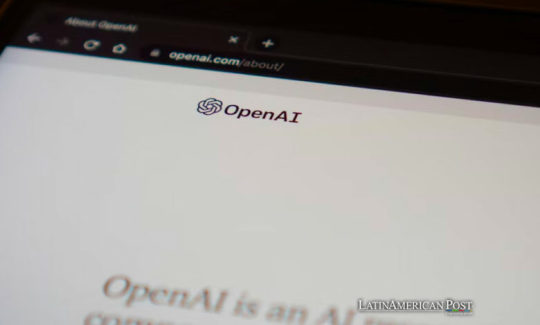
Brazil’s government is partnering with OpenAI to enhance the efficiency of its legal system using artificial intelligence. This initiative aims to mitigate the escalating costs of court-ordered debt payments, which have significantly impacted the federal budget.
Brazil’s government has taken a significant step towards modernizing its legal system by partnering with OpenAI to implement artificial intelligence (AI) solutions for screening and analyzing thousands of lawsuits. This initiative aims to prevent costly court losses straining the federal budget. The AI service will flag lawsuits that require government intervention before final decisions are made, helping to map trends and potential action areas for the solicitor general’s office (AGU), Reuters reported.
Microsoft will provide the AI services through its Azure cloud-computing platform, using technology developed by ChatGPT creator OpenAI. The financial details of the agreement between Brazil and OpenAI were not disclosed.
Continue reading.
#brazil#brazilian politics#politics#artificial intelligence#man i am not looking forward at all to the upcoming reports of biases reproduced in the AI-powered lawsuit results 🙃#mod nise da silveira#image description in alt
5 notes
·
View notes
Text
Discover the New Microsoft Entra ID (formerly Azure AD): Pricing, Features, and Updates!

Stay ahead with Microsoft's latest cloud innovation! Azure AD is now Microsoft Entra ID, continuing the tradition of renaming to enhance clarity and functionality.
What You'll Find:
What is Microsoft Entra ID?: A cloud-based identity and access management service.
Key Features: Access Management, Identity Protection, Governance, Privileged Managed Identities, and B2B/B2C Services.
Pricing Plans: Explore the free, P1, and P2 plans and their benefits.
Why It Matters: Microsoft Entra ID ensures secure and efficient access to IT resources, whether internal or external. With enhanced features and flexible pricing, it's designed to meet diverse business needs.
Read More! Dive into our blog for a detailed guide on Microsoft Entra ID. Stay informed and make the most of Microsoft's cloud services.
Contact ECF Data for Expert Guidance Need help navigating Microsoft Entra ID? Contact ECF Data for a free Q&A session and expert licensing advice. Click below to connect with our senior negotiation experts.
Read the Full Blog: Azure AD (Active Directory) Now Microsoft Entra ID: Pricing, Features, Updates
Contact ECF Data
Unlock the potential of Microsoft Entra ID today!
#azure ai#azure openai#azure openai service#azure open ai#azure ai studio#microsoft azure ai#azure openai pricing#azure ai services#azure ai ml services
1 note
·
View note
Text
For hackers seeking to maximize chaos, so-called denial-of-service attacks that knock targets offline with waves off junk traffic are typically more of a blunt cudgel than a weapon of mass destruction. But according to the US Department of Justice, a pair of Sudanese brothers allegedly behind the hacktivist group Anonymous Sudan launched a spree of those crude cyberattacks that was both powerful and cruel enough in its choice of victims—extending to dozens of hospitals in multiple countries, Israel’s missile alert system, and hundreds of other digital services—that one of them is now being charged not only with criminal hacking but also with the rare added allegation of seeking to cause physical injury and death.
On Wednesday the DOJ unsealed charges against brothers Ahmed and Alaa Omer, who allegedly launched a punishing bombardment of more than 35,000 distributed denial-of-service, or DDoS, attacks against hundreds of organizations, taking down websites and other networked systems as part of both their own ideologically motivated hacktivism, as a means of extortion, or on behalf of clients of a cyberattack-for-hire service they ran for profit. According to US prosecutors and the FBI, their victims included Microsoft's Azure cloud services, OpenAI's ChatGPT, video game and media companies, airports, and even the Pentagon, the FBI, and the Department of Justice itself.
“We declare cyber war on the United States,” Ahmed Omer posted in a message to Anonymous Sudan's Telegram channel in April of last year, according to the indictment. "The United States will be our primary target.”
Anonymous Sudan also targeted hospitals in the US, Denmark, Sweden, and India. In at least one case in February, prosecutors say, the attacks on Cedars-Sinai Health Systems in Los Angeles caused hours of downtime for health care services that diverted patients to other hospitals. In that Los Angeles incident, the Justice Department claims that one of the two hackers explicitly sought to cause potentially deadly harm.
“Bomb our hospitals in Gaza, we shut down yours too, eye for eye,” Ahmed Omer allegedly wrote on Telegram in the midst of the attack. As a result of those hospital attacks, prosecutors are bringing charges against Ahmed Ohmer that carry a potential life sentence, which prosecutors describe as the most severe criminal charges ever brought against a hacker accused of denial-of-service attacks.
In earlier cases, US authorities claim, the hackers used cyberattacks to disrupt Israel's Tzeva Adom or “Code Red” missile alert app, tearing the system offline in the midst of deadly rocket attacks by Hamas, including during Hamas's attacks on October 7th of last year.
“The actions taken by this group were callous and brazen,” Martin Estrada, a US attorney for the Central District of California and lead prosecutor in the case, told reporters in a conference call. “This group was motivated by their extremist ideology, essentially a Sudanese nationalist ideology.”
Despite publicizing its charges against the two men, Estrada declined to make clear the whereabouts of the two alleged hackers—though he noted that they are in custody. An FBI affidavit accompanying the indictment states that an FBI agent, Elliott Peterson, interviewed both of the Omer brothers and that Ahmed Omer admitted to being an Anonymous Sudan administrator.
Law enforcement agencies also appear to have carried out an operation to take down Anonymous Sudan's infrastructure in March of this year, which prevented the group from carrying out further attacks. The Telegram channel where the group boasted of its targeting and advertised its for-profit attack service went entirely silent around that time and has since ceased to exist. “Anonymous Sudan in name and in operation is effectively dead,” says Chad Seaman, a principal security researcher for tech firm Akamai and a member of Big Pipes, a working group focused on DDoS that closely tracked the group and collaborated with law enforcement in its investigation.
From mid-2023 until that takedown, Anonymous Sudan distinguished itself among self-proclaimed hacktivists with a series of shockingly large and high-profile DDoS attacks. In June of last year, for instance, it pummeled Microsoft's Azure cloud services for days, knocking it intermittently offline and demanding a million-dollar ransom to stop. It also repeatedly took down OpenAI's ChatGPT in December and wrote on Telegram that it was targeting the company due to the pro-Israeli posts of one of its employees.
Anonymous Sudan has at times, in fact, appeared to have formal or informal ties to anti-Israel forces: According to prosecutors, it launched disruptive cyberattacks that targeted Israel's Tzeva Adom missile alert system on October 7, 2023, in the midst of attacks by the militant wing of Hamas that killed nearly 1,200 Israelis. As Israel's ensuing bombardment and invasion of the Gaza strip killed tens of thousands of Palestinian civilians over the months that followed, Anonymous Sudan frequently described the motivation for its attacks in its Telegram posts as the defense of Palestinians.
In December of 2023, for instance, Anonymous Sudan took OpenAI's ChatGPT offline with a sustained series of DDoS attacks in response to the company's executive Tal Broda vocally supporting the Israel Defense Forces’ missile attacks in Gaza. “More! No mercy! IDF don't stop!” Broda had written on X over a photo of a devastated urban landscape in Gaza, and in another post denied the existence of Palestine.
“We will continue targeting ChatGPT until the genocide supporter, Tal Broda, is fired and ChatGPT stops having dehumanizing views of Palestinians," Anonymous Sudan responded in a Telegram post explaining its attacks on OpenAI.
Still, Anonymous Sudan's true goals haven't always seemed entirely ideological, Akamai's Seaman says. The group has also offered to sell access to its DDoS infrastructure to other hackers: Telegram posts from the group as recently as March offered the use of its DDoS service, known as Godzilla or Skynet, for $2,500 a month. That suggests that even its attacks that appeared to be politically motivated may have been intended, at least in part, as marketing for its moneymaking side, Seaman argues.
“They seem to have thought, ‘We can get involved, really put a hurting on people, and market this service at the same time,’” Seaman says. He notes that, in the group's anti-Israel, pro-Palestine focus following the October 7 attacks, “there’s definitely an ideological thread in there. But the way it weaved through the different victims is something that maybe only the perpetrators of the attack fully understand.”
At times, Anonymous Sudan also hit Ukrainian targets, seemingly partnering with pro-Russian hacker groups like Killnet. That led some in the cybersecurity community to suspect that Anonymous Sudan was, in fact, a Russia-linked operation using its Sudanese identity as a front, given Russia's history of using hacktivism as false flag. The charges against Ahmed and Alaa Omer suggest that the group was, instead, authentically Sudanese in origin. But aside from its name, the group doesn't appear to have any clear ties to the original Anonymous hacker collective, which has been largely inactive for the last decade.
Aside from its targeting and politics, the group has distinguished itself through a relatively novel and effective technical approach, Akamai's Seaman says: Its DDoS service was built by gaining access to hundreds or possibly even thousands of virtual private servers—often-powerful machines offered by cloud services companies—by renting them with fraudulent credentials. It then used those machines to launch so-called layer 7 attacks, overwhelming web servers with requests for websites, rather than the lower-level floods of raw internet data requests that DDoS hackers have tended to use in the past. Anonymous Sudan and the customers of its DDoS services would then target victims with vast numbers of those layer 7 requests in parallel, sometimes using techniques called “multiplexing” or “pipelining” to simultaneously create multiple bandwidth demands on servers until they dropped offline.
For at least nine months, the group's technical power and brazen, unpredictable targeting made it a top concern for the anti-DDoS community, Seaman says—and for its many victims. “There was a lot of uncertainty about this group, what they were capable of, what their motivations were, why they targeted people,” says Seaman. “When Anonymous Sudan went away, there was a spike in curiosity and definitely a sigh of relief.”
The Justice Department's decision to level a criminal charge against Ahmed Omer that could lead to a life sentence for a denial-of-service attack may seem haphazard, given that state-sponsored cyberattacks and ransomware have often caused far more serious damage to health care networks, says Josh Corman, a researcher at the Institute for Security and Technology who has long focused on health care-targeted hacking. Corman says he's nonetheless encouraged to see prosecutors recognize that even crude cyberattacks can have serious—and even lethal—effects on victims.
“Yes, denial-of-service attacks can degrade and deny patent care to cause loss of life,” says Corman. “While this is the first, and it may seem arbitrary until we get more details, it could be heartening to see that we understand the outsize consequences of these attacks.”
3 notes
·
View notes
Text
Data Zones Improve Enterprise Trust In Azure OpenAI Service
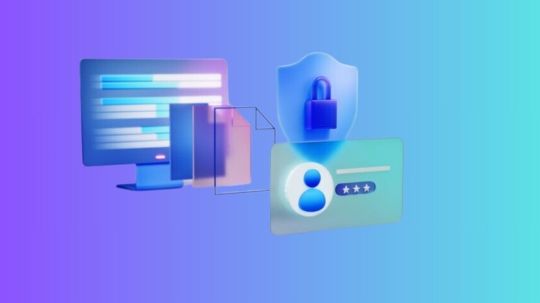
The trust of businesses in the Azure OpenAI Service was increased by the implementation of Data Zones.
Data security and privacy are critical for businesses in today’s quickly changing digital environment. Microsoft Azure OpenAI Service provides strong enterprise controls that adhere to the strictest security and regulatory requirements, as more and more businesses use AI to spur innovation. Anchored on the core of Azure, Azure OpenAI may be integrated with the technologies in your company to assist make sure you have the proper controls in place. Because of this, clients using Azure OpenAI for their generative AI applications include KPMG, Heineken, Unity, PWC, and more.
With over 60,000 customers using Azure OpenAI to build and scale their businesses, it is thrilled to provide additional features that will further improve data privacy and security capabilities.
Introducing Azure Data Zones for OpenAI
Data residency with control over data processing and storage across its current 28 distinct locations was made possible by Azure OpenAI from Day 0. The United States and the European Union now have Azure OpenAI Data Zones available. Historically, variations in model-region availability have complicated management and slowed growth by requiring users to manage numerous resources and route traffic between them. Customers will have better access to models and higher throughput thanks to this feature, which streamlines the management of generative AI applications by providing the flexibility of regional data processing while preserving data residency within certain geographic bounds.
Azure is used by businesses for data residency and privacy
Azure OpenAI’s data processing and storage options are already strong, and this is strengthened with the addition of the Data Zones capability. Customers using Azure OpenAI can choose between regional, data zone, and global deployment options. Customers are able to increase throughput, access models, and streamline management as a result. Data is kept at rest in the Azure region that you have selected for your resource with all deployment choices.
Global deployments: With access to all new models (including the O1 series) at the lowest cost and highest throughputs, this option is available in more than 25 regions. The global backbone of the Azure resource guarantees optimal response times, and data is stored at rest within the customer-selected
Data Zones: Introducing Data Zones, which offer cross-region load balancing flexibility within the customer-selected geographic boundaries, to clients who require enhanced data processing assurances while gaining access to the newest models. All Azure OpenAI regions in the US are included in the US Data Zone. All Azure OpenAI regions that are situated inside EU member states are included in the European Union Data Zone. The upcoming month will see the availability of the new Azure Data Zones deployment type.
Regional deployments: These guarantee processing and storage take place inside the resource’s geographic boundaries, providing the highest degree of data control. When considering Global and Data Zone deployments, this option provides the least amount of model availability.
Extending generative AI apps securely using your data
Azure OpenAI allows you to extend your solution with your current data storage and search capabilities by integrating with hundreds of Azure and Microsoft services with ease. Azure AI Search and Microsoft Fabric are the two most popular extensions.
For both classic and generative AI applications, Azure AI search offers safe information retrieval at scale across customer-owned content. This keeps Azure’s scale, security, and management while enabling document search and data exploration to feed query results into prompts and ground generative AI applications on your data.
Access to an organization’s whole multi-cloud data estate is made possible by Microsoft Fabric’s unified data lake, OneLake, which is arranged in an easy-to-use manner. Maintaining corporate data governance and compliance controls while streamlining the integration of data to power your generative AI application is made easier by consolidating all company data into a single data lake.
Azure is used by businesses to ensure compliance, safety, and security
Content Security by Default
Prompts and completions are screened by a group of classification models to identify and block hazardous content, and Azure OpenAI is automatically linked with Azure AI Content Safety at no extra cost. The greatest selection of content safety options is offered by Azure, which also has the new prompt shield and groundedness detection features. Clients with more stringent needs can change these parameters, such as harm severity or enabling asynchronous modes to reduce delay.
Entra ID provides secure access using Managed Identity
In order to provide zero-trust access restrictions, stop identity theft, and manage resource access, Microsoft advises protecting your Azure OpenAI resources using the Microsoft Entra ID. Through the application of least-privilege concepts, businesses can guarantee strict security guidelines. Furthermore strengthening security throughout the system, Entra ID does away with the requirement for hard-coded credentials.
Furthermore, Managed Identity accurately controls resource rights through a smooth integration with Azure role-based access control (RBAC).
Customer-managed key encryption for improved data security
By default, the information that Azure OpenAI stores in your subscription is encrypted with a key that is managed by Microsoft. Customers can use their own Customer-Managed Keys to encrypt data saved on Microsoft-managed resources, such as Azure Cosmos DB, Azure AI Search, or your Azure Storage account, using Azure OpenAI, further strengthening the security of your application.
Private networking offers more security
Use Azure virtual networks and Azure Private Link to secure your AI apps by separating them from the public internet. With this configuration, secure connections to on-premises resources via ExpressRoute, VPN tunnels, and peer virtual networks are made possible while ensuring that traffic between services stays inside Microsoft’s backbone network.
The AI Studio’s private networking capability was also released last week, allowing users to utilize its Studio UI’s powerful “add your data” functionality without having to send data over a public network.
Dedication to Adherence
It is dedicated to helping its clients in all regulated areas, such as government, finance, and healthcare, meet their compliance needs. Azure OpenAI satisfies numerous industry certifications and standards, including as FedRAMP, SOC 2, and HIPAA, guaranteeing that businesses in a variety of sectors can rely on their AI solutions to stay compliant and safe.
Businesses rely on Azure’s dependability at the production level
GitHub Copilot, Microsoft 365 Copilot, Microsoft Security Copilot, and many other of the biggest generative AI applications in the world today rely on the Azure OpenAI service. Customers and its own product teams select Azure OpenAI because it provide an industry-best 99.9% reliability SLA on both Provisioned Managed and Paygo Standard services. It is improving that further by introducing a new latency SLA.
Announcing Provisioned-Managed Latency SLAs as New Features
Ensuring that customers may scale up with their product expansion without sacrificing latency is crucial to maintaining the caliber of the customer experience. It already provide the largest scale with the lowest latency with its Provisioned-Managed (PTUM) deployment option. With PTUM, it is happy to introduce explicit latency service level agreements (SLAs) that guarantee performance at scale. In the upcoming month, these SLAs will go into effect. Save this product newsfeed to receive future updates and improvements.
Read more on govindhtech.com
#DataZonesImprove#EnterpriseTrust#OpenAIService#Azure#DataZones#AzureOpenAIService#FedRAMP#Microsoft365Copilot#improveddatasecurity#data#ai#technology#technews#news#AzureOpenAI#AzureAIsearch#Microsoft#AzureCosmosDB#govindhtech
2 notes
·
View notes
Text
9 Best AI Chatbots
Smartest AI Chatbots in 2023
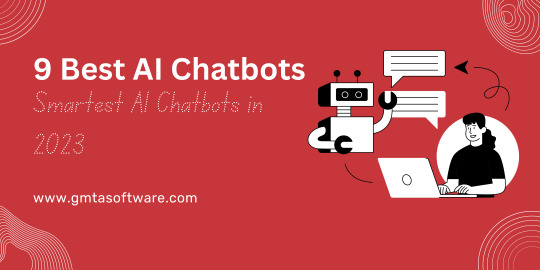
Chatbots have become one of the most important advances in the constantly evolving field of artificial intelligence (AI). These virtual assistants are made to converse with users in natural language and provide customized experiences in a variety of industries. As 2023 approaches, AI chatbots’ capabilities have advanced to new levels, and their use cases are becoming more varied.
The nine most intelligent AI chatbots that are trending in 2023 will be covered in this blog:
1. GPT-4 Chatbot by OpenAI

OpenAI’s GPT-4 stands as a shining example of conversational AI prowess. With improved contextual understanding and human-like responses, GPT-4 has become a cornerstone for numerous applications, ranging from customer support to content creation. Its impressive language generation abilities and nuanced understanding of user queries make it an invaluable tool for businesses and individuals alike.
2. Google’s ChatGPT-X
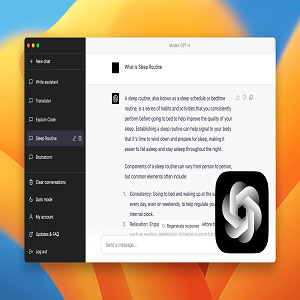
Google has also made significant strides in the AI chatbot domain with ChatGPT-X. This chatbot leverages Google’s vast resources and the power of GPT-3.5, allowing for more coherent and contextually relevant conversations. ChatGPT-X excels in aiding users with information retrieval, task management, and even providing companionship.
3. Amazon’s EchoBot

EchoBot, developed by Amazon, showcases the potential of AI chatbots in the realm of e-commerce. Integrated with Amazon’s shopping platform, EchoBot assists users in product recommendations, order tracking, and seamless shopping experiences. Its ability to understand user preferences and cater to their needs has elevated the online shopping journey.
4. IBM’s Watson Assistant
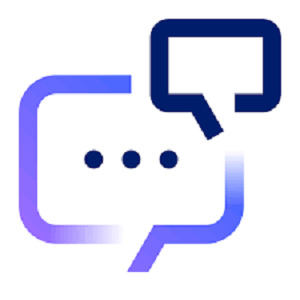
IBM’s Watson Assistant continues to impress with its AI-powered solutions for enterprises. In 2023, it has evolved to offer even more sophisticated natural language processing (NLP) capabilities. Watson Assistant empowers businesses to create tailored virtual assistants that streamline customer interactions, improve support systems, and enhance overall operational efficiency.
5. Microsoft’s Azure Bot Services

Microsoft’s Azure Bot Services has solidified its position as a top choice for businesses seeking AI-driven chatbot solutions. With enhanced language understanding and integration with Microsoft’s ecosystem, Azure Bot Services excels in diverse applications, including internal process automation, customer service, and software troubleshooting.
6. Facebook’s SocialBuddy

Facebook’s SocialBuddy is a testament to the integration of AI chatbots in social media platforms. Designed to facilitate brand-consumer interactions, SocialBuddy assists businesses in managing customer inquiries, feedback, and engagement. Its sentiment analysis capabilities contribute to personalized responses that resonate with users on a deeper level.
7. Siri 2.0 by Apple

Apple’s Siri has been a household name since its inception, and in 2023, Siri 2.0 takes virtual assistance to new heights. With advancements in speech recognition and context-awareness, Siri 2.0 provides users with a more intuitive and seamless experience across their Apple devices. From setting reminders to controlling smart home devices, Siri remains a frontrunner in the AI assistant landscape.
8. Samsung’s Bixby
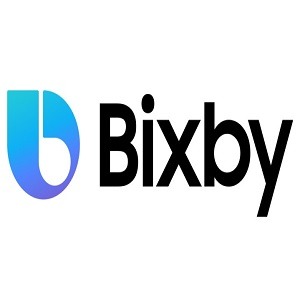
Samsung’s Bixby has matured into a comprehensive AI assistant that caters to users’ daily needs. Its integration with Samsung’s ecosystem empowers users to control devices, manage schedules, and access relevant information effortlessly. Bixby’s multi-modal capabilities, combining voice, text, and touch interactions, offer a well-rounded and user-friendly experience.
9. Salesforce’s ServiceBot
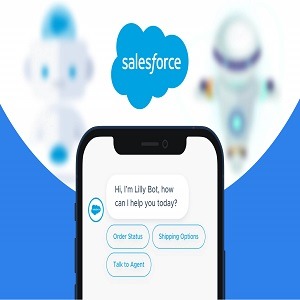
In the realm of customer relationship management (CRM), Salesforce’s ServiceBot shines brightly. Its advanced AI-driven chat capabilities enable businesses to provide exceptional customer support, personalized recommendations, and proactive issue resolution. ServiceBot’s integration with Salesforce’s CRM platform ensures a seamless transition between customer interactions and data management.
The year 2023 has witnessed the chatbot landscape evolving into a realm of boundless possibilities. The nine AI chatbots mentioned above represent a diverse range of applications, from customer support to social interactions, and from e-commerce to enterprise solutions.
These smart AI chatbots are not only changing the way businesses engage with customers but also enhancing individual experiences across various platforms.
As AI continues to advance, we can only expect these chatbots to become even smarter, more intuitive, and more integrated into our daily lives. Whether it’s streamlining business processes or providing personalized recommendations, AI chatbots are undoubtedly here to stay, making our interactions with technology more seamless and human-like than ever before.
1 note
·
View note
Text
Text-to-Speech Platforms Gain Creative Industry Traction
Market Overview
The AI Voice Generator Market is revolutionizing the way humans interact with technology. What was once the stuff of science fiction—machines that speak with realistic, human-like voices—is now a rapidly growing industry transforming everything from customer service to entertainment. AI voice generators use sophisticated artificial intelligence algorithms to convert text into speech that sounds remarkably natural, and they’re becoming essential tools in various sectors.
In 2023, the global AI Voice Generator Market was valued at USD 1.6 billion. This figure is projected to grow substantially to around USD 8.0 billion by 2033, achieving a remarkable CAGR of 16.9% over the forecast period. The increasing demand for interactive digital experiences, voice-driven applications, and personalized content is fueling this growth.
Click to Request a Sample of this Report for Additional Market Insights: https://infinitymarketresearch.com/request-sample/1121
Market Dynamics
The surge in demand for AI voice generators is driven by several intertwined forces. At the core is the rise of voice-enabled technologies. Smart speakers, virtual assistants like Amazon’s Alexa and Apple’s Siri, and AI-powered chatbots are becoming ubiquitous in homes and businesses alike. These systems rely on realistic, pleasant-sounding voice synthesis to create seamless user experiences.
Content creation is another key driver. From podcasts and YouTube videos to e-learning modules and audiobooks, content creators are using AI voices to produce high-quality audio at scale, without the time or cost associated with hiring voice actors. This is particularly valuable for small businesses and independent creators who want professional-grade output without a big budget.
Accessibility is also a significant factor. AI voice technology plays an essential role in helping visually impaired users access digital content. It also supports multilingual applications, enabling businesses to expand their global reach through local language support with minimal effort.
Despite the excitement, challenges remain. Ethical concerns about deepfakes and voice cloning have emerged, prompting discussions around regulation and responsible AI use. Additionally, fine-tuning voice tone, emotion, and context-specific pronunciation still requires improvement, though advancements are rapidly closing these gaps.
Key Players Analysis
The AI Voice Generator Market features a mix of tech giants and specialized startups, all racing to deliver increasingly lifelike and adaptable voice solutions. Major players include Microsoft, Google, Amazon Web Services (AWS), IBM, and Baidu, alongside newer entrants like Descript, Resemble.ai, and LOVO.
Google's Cloud Text-to-Speech API and Amazon Polly are widely used by developers to build voice interfaces and apps. These platforms offer scalable, multi-language voice synthesis with extensive customization features. Microsoft Azure's Text-to-Speech solution is similarly robust, especially after integrating with OpenAI’s language models to enhance contextual understanding.
Descript’s Overdub and Resemble.ai have gained traction for allowing content creators to generate synthetic voice-overs from text with minimal technical expertise. These platforms are particularly popular among podcasters, e-learning developers, and marketing professionals.
Meanwhile, OpenAI and NVIDIA continue to push the boundaries of generative voice AI with research into emotional nuance and conversational realism.
Regional Analysis
North America dominates the AI Voice Generator Market, with the U.S. leading in both adoption and innovation. This is due to a high concentration of tech companies, strong infrastructure, and a large user base for AI-powered services. From customer support centers to gaming, businesses across industries are embracing AI voices to streamline operations and enhance user experience.
Europe follows closely, particularly in countries like the U.K., Germany, and France. The European market is driven by the use of voice tech in automotive systems, smart home devices, and multilingual applications, as well as growing investments in AI R&D.
Asia Pacific is emerging as a rapidly growing region. Nations like China, Japan, South Korea, and India are integrating AI voice technologies into education, healthcare, entertainment, and fintech. In China, companies like iFlytek are local leaders in AI-driven voice synthesis, serving millions of users.
Latin America and the Middle East & Africa are witnessing gradual adoption, particularly as smartphone penetration and internet connectivity improve. Businesses in these regions are beginning to see the value of AI voice for local language services and digital inclusion.
Recent News & Developments
The AI Voice Generator Market is evolving quickly, with new features, products, and partnerships being announced regularly. In 2024, Microsoft expanded its neural TTS (text-to-speech) voice lineup to include more expressive, emotional tones suitable for storytelling and entertainment.
Google and Amazon both rolled out updates focused on reducing latency and improving multilingual support in their cloud-based TTS solutions. Meanwhile, startups like ElevenLabs and Play.ht introduced browser-based platforms that allow users to create, edit, and export voice content with astonishing realism.
On the regulatory front, discussions around ethical AI use have intensified. Industry groups and governments are working to establish guidelines for voice cloning, especially for public figures or brands, to prevent misuse and ensure user trust.
Browse Full Report: https://infinitymarketresearch.com/ai-voice-generator-market/1121
Scope of the Report
Looking ahead, the AI Voice Generator Market is set to become a foundational component of the digital experience economy. Its use cases are expanding rapidly—from virtual influencers and digital avatars to real-time voice translation and customer support automation.
The next wave of innovation will likely focus on personalization. Future AI voices will be able to adapt to individual preferences, mimic accents, and convey subtle emotions, making them almost indistinguishable from human voices. Integration with natural language processing and emotional AI will also deepen user engagement across applications.
As voice becomes the interface of choice in both personal and professional settings, companies that invest in ethical, intelligent, and accessible voice AI will be well-positioned to lead. Whether it's powering a smart home, teaching a virtual class, or narrating a video, AI-generated voices are no longer just tools—they’re becoming the voices of the digital world.
Discover Additional Market Insights from Infinity Market Research:
Global Cloud Computing Market size is expected to be worth around USD 2,780.0 Billion by 2033 from USD 559.4 Billion in 2023, growing at a CAGR of 17.1% during the forecast period from 2023 to 2033.
The Global Drone Market size is expected to be worth around USD 184.0 Billion by 2033 from USD 31.3 Billion in 2023, growing at a CAGR of 17.3% during the forecast period from 2023 to 2033.
Global ChatBot Market size is expected to be worth around USD 45.3 Billion by 2033 from USD 5.6 Billion in 2023, growing at a CAGR of 23.2% during the forecast period from 2023 to 2033.
Global AI Voice Generator Market size is expected to be worth around USD 8.0 Billion by 2033 from USD 1.6 Billion in 2023, growing at a CAGR of 16.9% during the forecast period from 2023 to 2033.
About Us
We at Infinity Market Research hold expertise in providing up-to-date, authentic, and reliable information across all industry verticals. Our diverse database consists of information gathered from trusted and authorized data sources.
We take pride in offering high-quality and comprehensive research solutions to our clients. Our research solutions will help the clients in making an informed move and planning their business strategies. We strive to provide excellent and dedicated market research reports so that our clients can focus on growth and business development plans. We have a domain-wise expert research team that works on client-specific custom projects. We understand the diverse requirements of our clients and keep our reports updated based on the market scenario.
Contact US:
Pune, Maharashtra, India
Mail: [email protected]
Website: https://infinitymarketresearch.com
For More Insights, follow us on LinkedIn- https://www.linkedin.com/company/imrreports
0 notes
Text
Copilot Hangi Yapay Zeka? Altındaki Teknoloji ve Model
Microsoft Copilot, OpenAI tarafından geliştirilen GPT (Generative Pre-trained Transformer) teknolojisini kullanır. Özellikle Copilot'un farklı sürümleri, GPT-4 ve GPT-4 Turbo gibi büyük dil modelleriyle entegre çalışmaktadır. Microsoft, bu modelleri Azure OpenAI altyapısı üzerinden kendi uygulamalarına entegre ederek Copilot ürünlerini oluşturmuştur.
Microsoft Copilot'un Temeli: GPT-4
Copilot'un arkasındaki ana yapay zeka modeli GPT-4’tür. GPT-4, metin anlama, üretme, özetleme ve analiz etme gibi çok çeşitli görevlerde yüksek doğrulukla çalışır. Microsoft, bu modeli Microsoft 365, Edge, Bing ve diğer hizmetlerinde Copilot olarak sunar. GPT-4, doğal dil işleme alanında son derece gelişmiş bir modeldir. Çok dilli destek sunar ve Türkçe dahil birçok dili anlayıp yanıt verebilir. Konu bağlamını koruyarak çok adımlı işlemleri başarıyla yürütür.
GitHub Copilot: Codex Modeli Kullanıyor
GitHub Copilot, GPT’nin kodlama odaklı versiyonu olan Codex modeline dayalıdır. OpenAI’nin Codex modeli, GPT-3'ün özel olarak yazılım geliştirme için optimize edilmiş bir versiyonudur. Python, JavaScript, TypeScript gibi birçok dili destekler. Kod tamamlama, açıklama ve hata ayıklama gibi görevleri yerine getirir. Yazılımcıların verimliliğini artırmak için entegre editör yardımı sunar.
Azure OpenAI Altyapısı Kullanılıyor
Microsoft Copilot hizmetleri, Azure OpenAI Service üzerinden sağlanır. Bu, Copilot’un hem güvenli hem de ölçeklenebilir bir ortamda çalışmasını sağlar. Kurumsal veri güvenliği sağlar. Kullanıcı özelinde özelleştirme yapılabilir. API tabanlı erişimle farklı uygulamalara kolay entegrasyon sunar.
Copilot’un Sahibi Kim?
Copilot, Microsoft’un ürünüdür; ancak arkasındaki yapay zeka modeli OpenAI tarafından geliştirilmiştir. Microsoft, OpenAI ile yaptığı stratejik ortaklık sayesinde GPT-4’ü kullanma ve entegre etme hakkına sahiptir. Microsoft, OpenAI'ye milyarlarca dolarlık yatırım yapmıştır. GPT modellerinin işletmelerdeki ticari kullanım haklarına sahiptir. Hem bireysel hem kurumsal çözümler geliştirmektedir.
Copilot ile ChatGPT Arasındaki Fark Ne?
Özellik Copilot (Microsoft) ChatGPT (OpenAI) Model GPT-4 / Codex GPT-4 / GPT-4 Turbo Kullanım Alanı Ofis yazılımları, Edge, Bing Web tabanlı sohbet arayüzü Entegrasyon Microsoft uygulamalarına özel Tarayıcı üzerinden evrensel Kodlama Desteği GitHub Copilot üzerinden Evet, ancak yazılımcı odaklı değil Hangi Uygulamalarda Hangi Yapay Zeka Kullanılıyor? Microsoft Word, Excel, Outlook: GPT-4 GitHub Copilot: Codex Bing Chat / Copilot (Web): GPT-4 Turbo Edge Tarayıcı Copilot: GPT-4 Turbo
Copilot’un Altındaki Güçlü Teknoloji
Copilot, GPT-4 ve Codex gibi güçlü yapay zeka modelleriyle çalışır ve Azure OpenAI Service ile desteklenir. Bu yapı sayesinde metin üretiminden kodlamaya, veri analizinden e-posta düzenlemeye kadar geniş bir kullanım yelpazesi sunar. Microsoft’un OpenAI ile kurduğu iş birliği, Copilot’u iş dünyasında öne çıkan yapay zeka destekli çözümlerden biri haline getirmiştir. Read the full article
#AIdestekliaraçlar#Copilot#Copilothangiyapayzeka#Copilotözellikleri#dilmodeli#GPT-4#MicrosoftCopilot#OpenAI#yapayzekamodelleri#yapayzekateknolojisi
0 notes